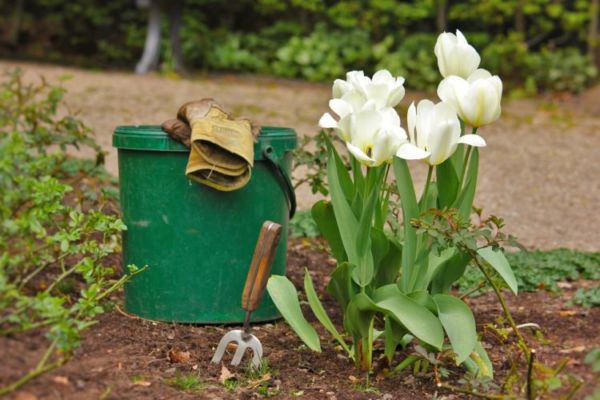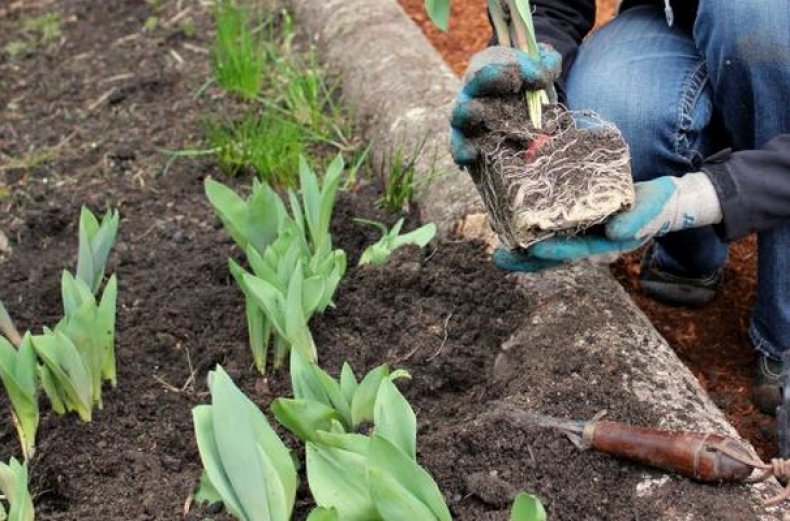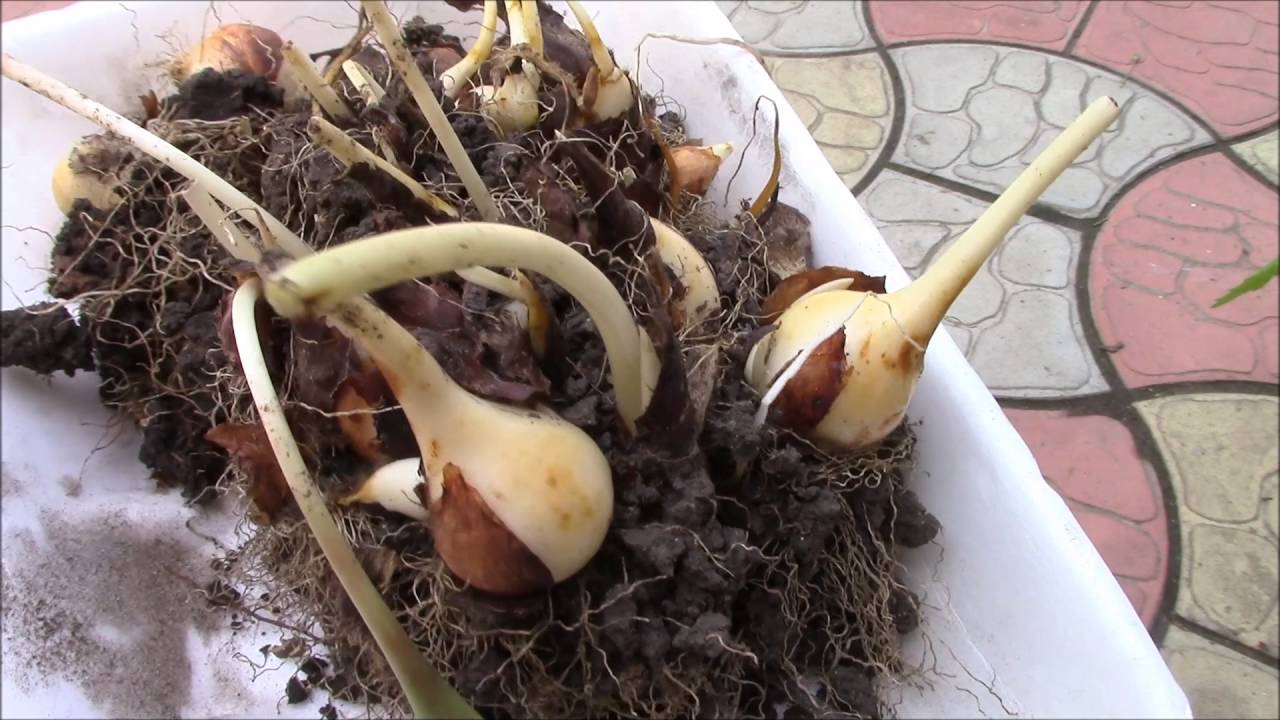Content:
One of the first spring flowers, tulip, belongs to the genus of perennial herbaceous bulbous plants of the lily family. Now there are 80 different species (varieties and varieties of about 1800). It is believed that tulips grew many millions of years ago in the mountainous regions of Iran and the Tien Shan. They appeared in Europe in the 16th century and over the next 150 years they held the status of the most expensive garden culture.
They are found almost everywhere these days. Only they are not in the permafrost zone. How to grow and when to replant tulips after flowering depends on where they are growing.
Dates of flowering tulips
The beginning of flowering of tulips depends on several factors. The most significant are:
- Plant variety. Planting of various varieties is practiced to obtain a long flowering culture. For example, in the Moscow region and central Russia, the tulips of Bibirstein, Kaufman, Greig, Foster will be the first to bloom (in April). Then the early double and simple buds will be picked up - Abba (Abba), Cooler Cardinal and so on. They will bloom until mid-May. And then comes the time of late varieties - Angelique, Carnavalde Nice, Lilac Perfection. In June, the flowering of tulips with parrot and green-flowered varieties ends.
- Climatic conditions. Spring comes at different times every year. Fluctuations in one direction or another can be up to a month. In any case, the tulip will hatch after the snow melts. From the first leaves to the set of the bud, it takes about a month.
- Growing region. If we consider the Crimea and the middle zone of Russia for comparison, then the difference in flowering will be 20-30 days. At the same time, a sudden cold snap and even snowfall will not affect their well-being in any way (we do not mean frost).
The flowering time depends on the variety, outdoor temperature and proper care. Each species can bloom for 10 to 15 days. To get closer to the upper bar, you should loosen the soil in the root zone, water it correctly (without flooding) and give top dressing (for example, Kemira Universal-2, Azofoska).
Planting tulips: what is it for
Tulips need constant replanting. A timely transplant will preserve the varietal qualities of the tulip, which is especially important for hybrids. This procedure is needed for:
- collecting babies that have separated from the mother's bulb;
- sorting planting material by onion size;
- culling sick and damaged tubers;
- changes in the location of the flower garden;
- soil enrichment with organic matter.
Transplanting tulips after flowering should be carried out according to plan. The flower should bloom, the leaves should turn yellow, the stems should dry out. During this period, watering stops (dormant period). It is dangerous to wait further: the bulb can take root over a new one and begin to prepare for flowering, which will greatly weaken the plant.
The timing of transplanting the culture after flowering in open ground
The time for replanting tulips depends on the soil temperature. It should be around +10 degrees. At a higher soil temperature, plant germination is possible, freezing - with the onset of frost.This condition is maintained in all climatic zones, so the transplantation date can fall on any month.
The planting material itself should be prepared about 2 months before disembarkation. In order to avoid decay of the onions, it is advised to dig them up in dry windy weather.
It is possible to transplant tulips in the spring, but there will be no flowering this season. If necessary, transplanting a flowering plant is possible. In this case, the bud will dry out and fall off.
Correct transplantation of tulips after flowering
Correct transplanting of tulip bulbs includes 3 blocks of events: organizing a place for planting in summer, preparing planting material and planting itself.
Site preparation
First, you must select a site. The main requirement is non-flooding with melt water. If the site is only on the lowland, then the beds should be raised with bulk soil.
Next, you need to prepare the soil, that is, fertilize. They will feed the soil wonderfully:
- humus;
- rotted foliage;
- ash or dolomite flour (if the soil is acidic).
Material preparation
The preparation of planting material consists of:
- processing bulbs with 1% manganese solution;
- drying in a warm, ventilated place (no direct sunlight);
- freeing each onion from excess dried scales and roots;
- calibration;
- rejection of substandard and diseased tubers;
- creating optimal conditions for pre-planting storage. Store the onions at a temperature of about +24 ° C and a humidity of 70%.
When the soil temperature rises to + 10 ° C, you can start planting tulips.
Planting bulbs
Algorithm of actions:
- deep grooves are drawn (the depth is twice the height of the onion);
- bulbs are placed at a distance of 10-15 cm from each other (as small as possible);
- seedlings are covered with earth;
- the bed is covered with a non-woven cloth, fallen leaves or dry grass to protect it from recurrent frost.
Planting care
After planting and sheltering, no action can be taken until spring. As soon as the snow melts, the first shoots will appear. Depending on the climatic zones, this happens at the end of March or in the first days of April.
Breaking free from cover
The garden should be opened after germination. It is necessary to clean up the mulching layer so that the earth warms up more quickly under the spring sun. But with watering it is worth waiting. Spring moisture is enough.
Around the remaining seedlings, the soil should be carefully loosened and the soil moisture should be maintained until the buds appear (do not allow the soil to dry out). Once flowering begins, watering should be regular and sufficient.
Top dressing
Top dressing is applied immediately after emergence. In the future, you do not need to feed, although the abundant flowering with large buds directly depends on the feeding. Well suited for this purpose:
- Azofoska;
- Nitrofoska;
- Ammofoska;
- potassium nitrate.
For the first feeding, you can use wood ash.
Nowadays, various types and shapes of tulips are available to any gardener. Their colors range from pure white to almost black, from yellow to purple. Buds are oval, star-shaped, goblet, cup-shaped, double, fringed, lily-shaped. Which variety to choose is up to the gardener. The main thing is to follow the recommendations for flower care, in particular for plant transplantation.















